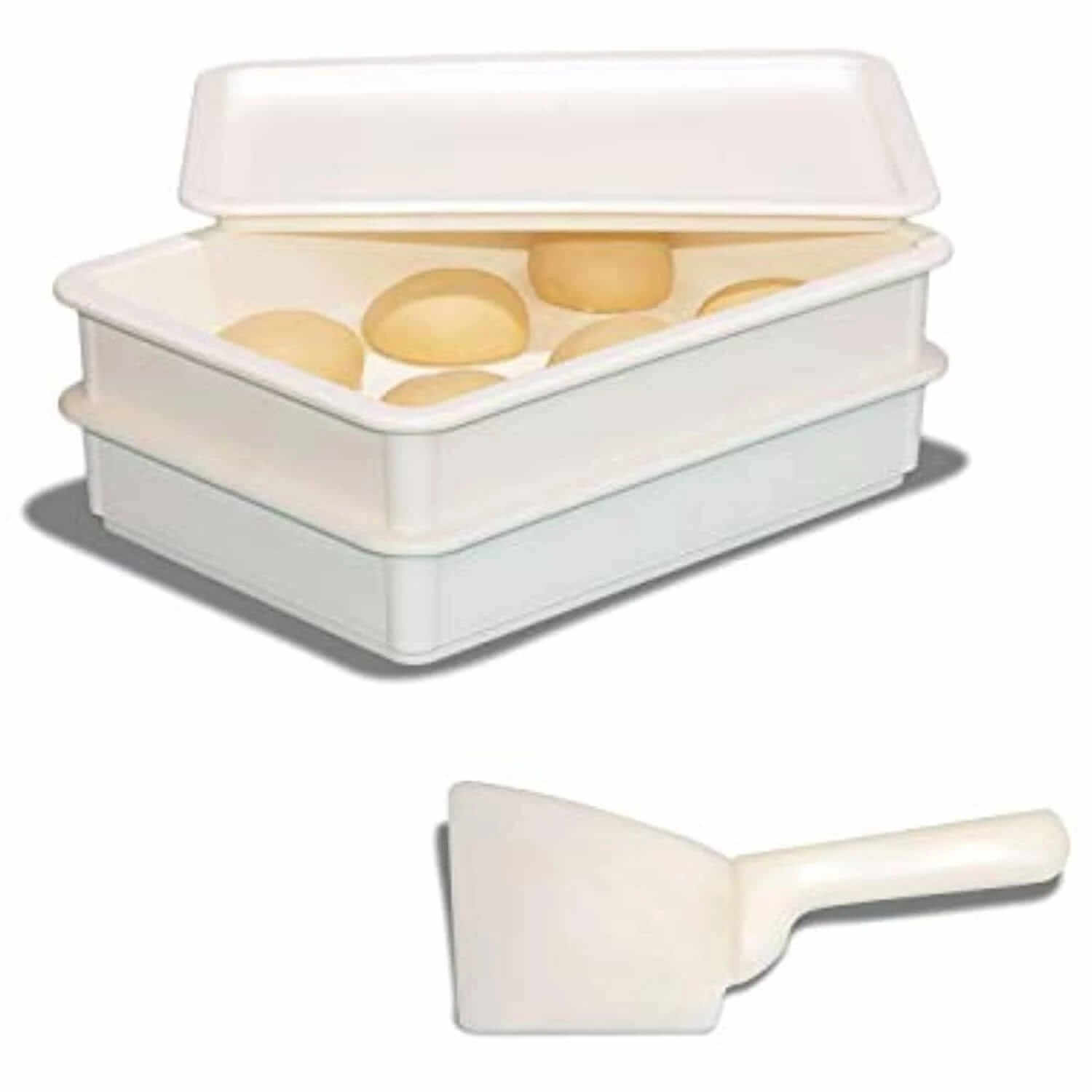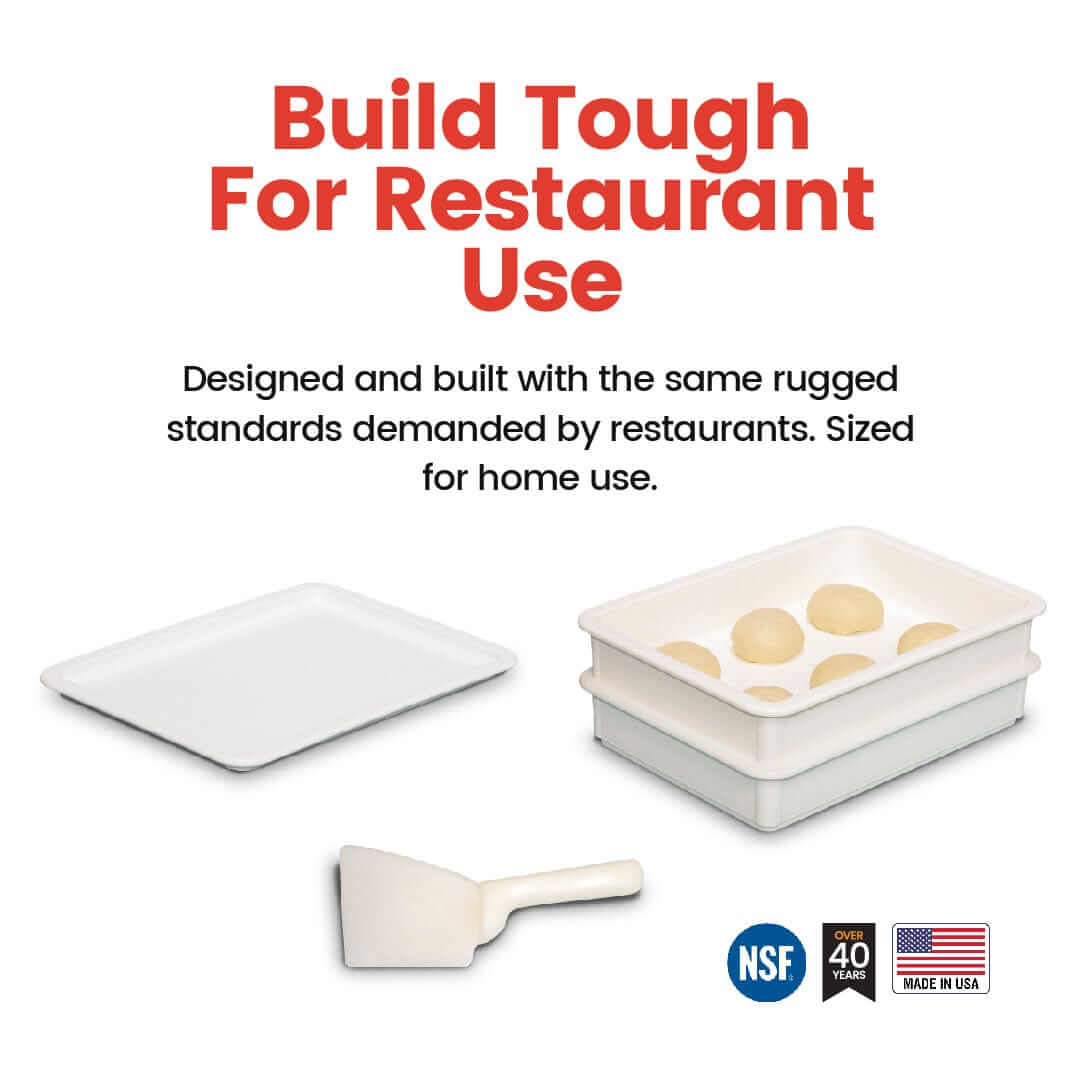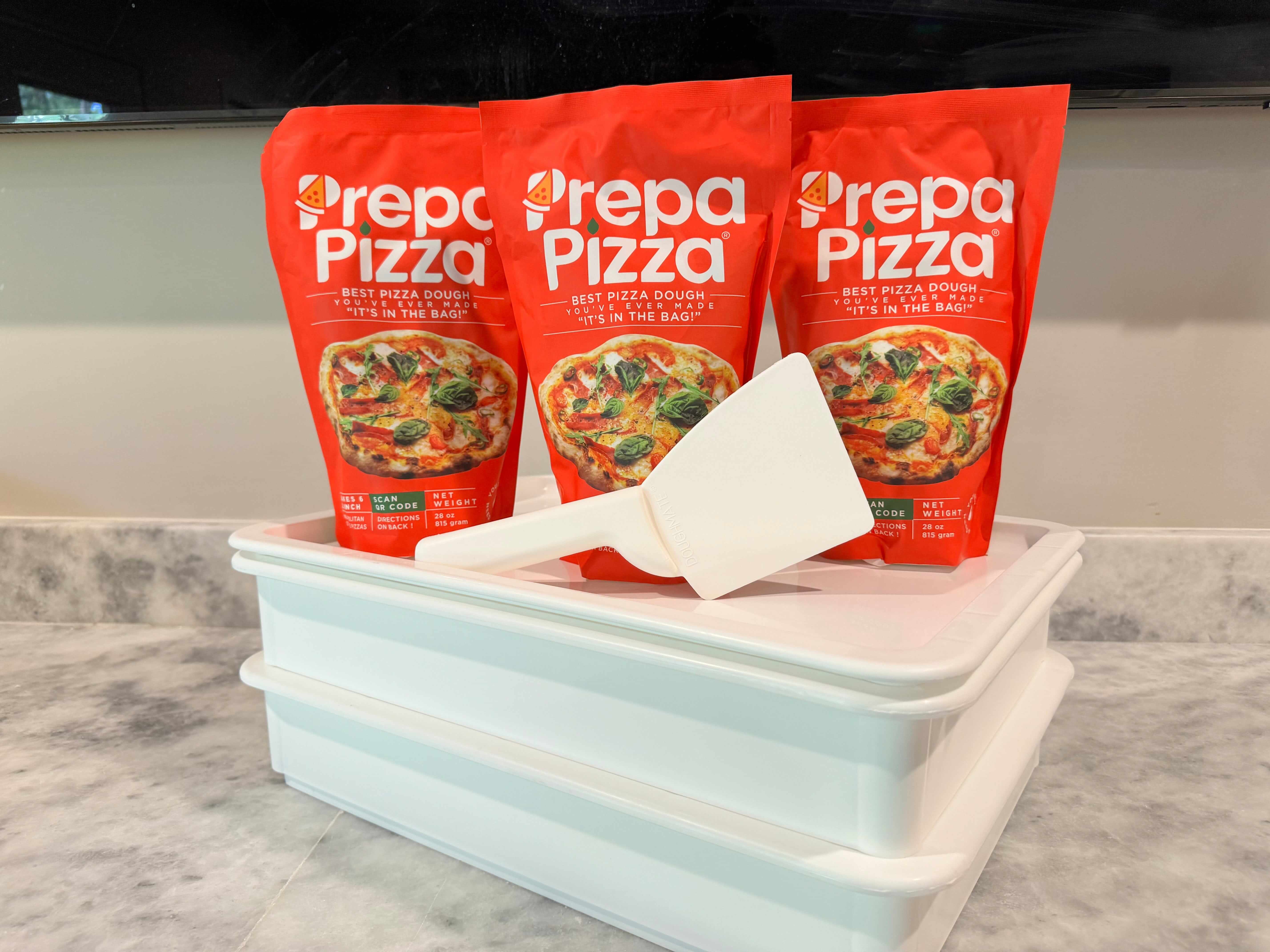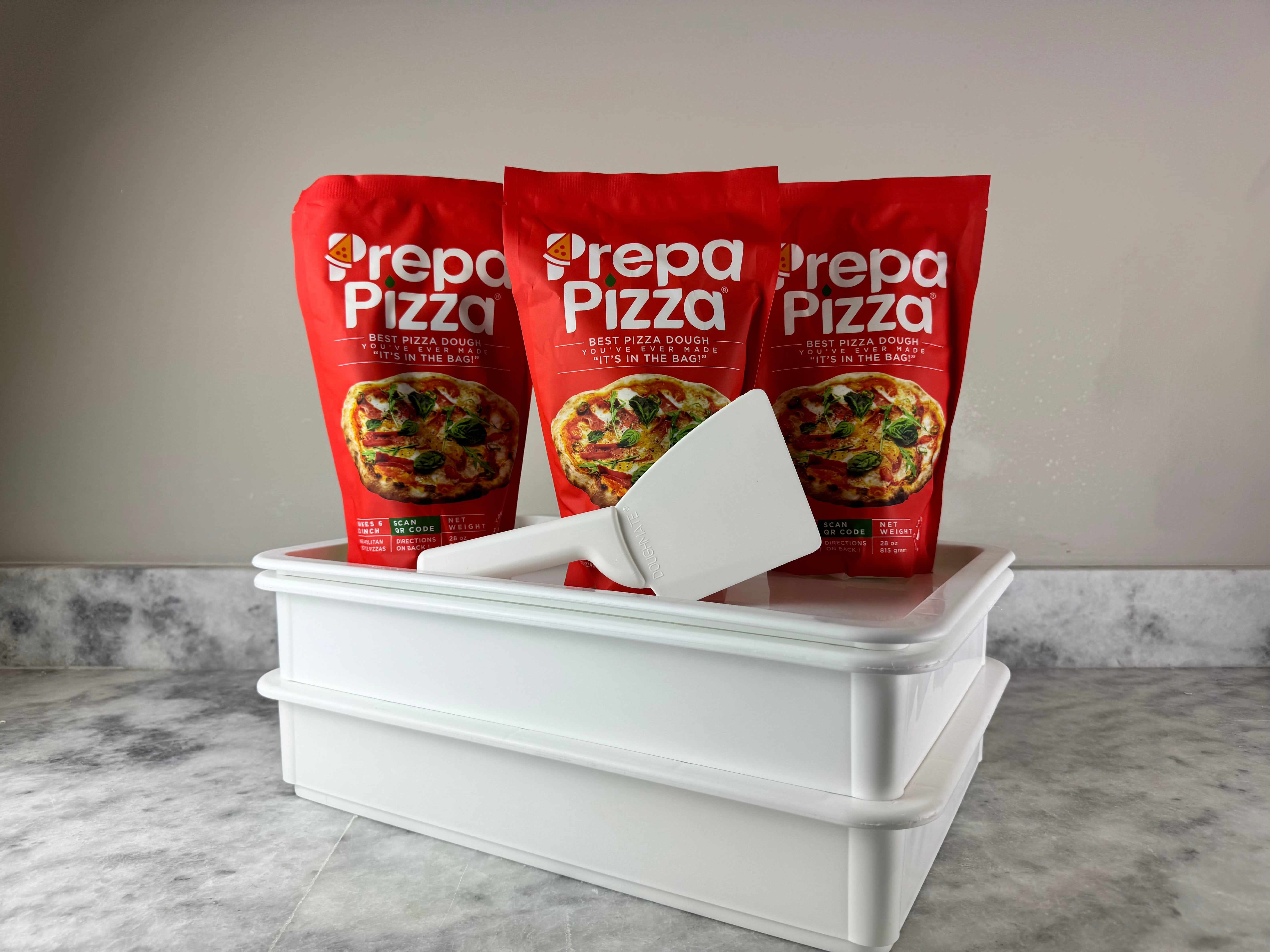
Chewy Bite Pizza: The Perfect Blend of Texture and Flavor
Chewy bite pizza is a delightful twist on traditional pizza, offering a unique texture that enhances your dining experience. By using Prepa Pizza's premade dough, you can achieve that perfect chewy crust right at home. This dough is crafted from high-quality ingredients, ensuring your pizza not only tastes great but also delivers that restaurant-quality experience.
Making chewy bite pizza is straightforward, especially with the convenience of premade options. You can easily customize your toppings while enjoying the substantial and satisfying texture that chewy crust brings. With just a few simple steps, you’ll create a delicious meal that impresses friends and family alike.
If you’re ready to elevate your pizza night, explore how Prepa Pizza's dough can transform your culinary adventures. With its easy-to-use format, it’s designed for those who want to taste the difference in quality and flavor, making your chewy bite pizza a memorable dish. For more details, check out the premade dough here.
What Is Chewy Bite Pizza?
Chewy bite pizza is a distinct style that combines a satisfying chewiness with a delightful flavor profile. This pizza typically emphasizes quality ingredients and the right fermentation process, contributing to a unique texture. When you use high-quality premade dough from Prepa Pizza, you can achieve the perfect base for this type of pizza.
The unique chewiness often comes from the interaction of moisture, flour, and gluten in the dough. Prepa Pizza’s premade dough ensures the right protein content, giving you the ideal structure for your chewy bites. You can explore their options here to elevate your pizza-making experience.
Key Characteristics
Chewy bite pizza is characterized by its slightly elastic and airy crust. The ideal dough should be well-hydrated, allowing for proper gluten development. This moisture content is essential for achieving that signature chewiness.
Another critical aspect is fermentation. A longer fermentation process allows the flavors to develop, enhancing the overall taste. You might also notice that the crust has a slightly crispy exterior, contrasting nicely with the chewy interior, providing a satisfying bite.
Popular Styles
Several popular styles of chewy bite pizza highlight this unique texture. One notable version is Neapolitan pizza, known for its soft, chewy crust and classic toppings like tomatoes and mozzarella.
Another variant is the New York-style pizza, which offers a more pronounced chew while remaining foldable. These styles leverage high-protein flour and appropriate hydration levels to create that signature chewiness. Whichever style you choose, starting with quality dough from Prepa Pizza will ensure a delicious outcome.
Ingredients That Create Chewiness
To achieve a chewy bite in pizza, understanding the right ingredients is crucial. This section focuses on how flour, water content, and cheese impact the texture and chewiness of your pizza crust. Using high-quality premade dough from Prepa Pizza can also elevate your results.
Role of Flour and Gluten
The type of flour you choose significantly affects the chewiness of your pizza. High-protein flours, such as bread flour, contain more gluten-forming proteins. Glutenin and gliadin proteins work together to create a strong gluten network that provides elasticity and chewiness.
When you knead the dough, you develop this gluten structure, which traps air bubbles during fermentation. This process contributes to a lighter and chewier texture. For optimal results, consider using Prepa Pizza's premade dough that utilizes high-quality flour and the right hydration level to enhance chewiness.
Importance of Water Content
Water plays a vital role in dough formulation. The hydration level affects gluten development and the overall structure of your pizza crust. A higher hydration level, typically around 60-65%, allows for better gluten formation and a chewier texture.
Too little water can lead to a dry, crumbly crust, while excessive water can make the dough too sticky and difficult to handle. Finding the right balance is key. With Prepa Pizza's dough, you benefit from a well-measured hydration level that supports optimal chewiness while maintaining ease of use.
Selecting Cheese: The Impact of Mozzarella
The choice of cheese can also contribute to the chewiness of your pizza. Mozzarella cheese, especially low-moisture varieties, is highly recommended. It melts beautifully and provides that characteristic stretchiness associated with perfect pizza.
When mozzarella is properly melted, it enhances the overall texture, complementing the chewy crust. Additionally, the proteins in mozzarella can create a pleasing mouthfeel that pairs well with the bread. Using quality ingredients from Prepa Pizza ensures that your pizza not only has the perfect base but also pairs beautifully with the right cheese for enhanced chewiness.
Mastering the Chewy Crust Recipe
Creating the perfect chewy pizza crust involves a careful balance of ingredients, preparation techniques, and baking methods. Utilizing high-quality ingredients, such as Prepa Pizza's premade dough, can make the process easier while ensuring a delicious outcome. Below are the details to master your chewy crust.
Step-by-Step Preparation Guide
Start with your Prepa Pizza dough to simplify the process. Allow the dough to come to room temperature before stretching it. This enhances elasticity, making it easier to create the desired shape.
Ingredients:
- 2 cups of all-purpose flour
- 1 teaspoon of salt
- 1 teaspoon of sugar
- 1/2 teaspoon of instant yeast
- Water (as needed)
Mix the dry ingredients first, then gradually add water until a soft dough forms. Knead for about 8-10 minutes, until smooth and elastic. For best results, let your dough rest for at least 30 minutes. This development of gluten is crucial for that classic chewy texture.
Tips for Dough Fermentation
Fermentation plays a significant role in developing the dough's flavor and texture. For your chewy crust, aim for a long fermentation period.
- Cold Fermentation: Refrigerate the dough for 24-72 hours. This slow process allows the flavor to deepen and improves texture.
- Room Temperature Fermentation: Let the dough rise in a warm environment for 1-2 hours. This method is quicker but can result in less complex flavors.
Make sure to monitor the dough's rise. It should approximately double in size. Punch it down gently after rising to release excess gas before shaping.
Baking Methods for Perfect Texture
Baking temperature and technique will significantly impact your crust. Preheat your oven to a high temperature, ideally 475°F to 500°F. This ensures a crispy bottom while maintaining chewiness in the crust.
- Stone Baking: Using a pizza stone yields excellent results. Place the stone in the oven during preheating for even heat distribution.
- Steel Method: If you don’t have a stone, a baking steel works well too. It retains heat effectively, contributing to a better texture.
Bake your pizza for about 10-15 minutes, checking for a golden-brown color. Remember, this method balances crispiness and chewiness perfectly.
Brand Innovations and Market Trends
The pizza industry has seen significant innovations in recent years, particularly with the introduction of products that enhance consumer experience. Key players are developing unique offerings, while market trends reflect changing consumer preferences. Understanding these dynamics is essential for staying informed.
Notable Brands Offering Chewy Bite Pizza
Several brands have introduced chewy bite pizza innovations, aiming to merge taste with convenience. DiGiorno, for example, recently launched their Wood Fired Style Crust Pizza, which emphasizes a crispy outer crust. This kind of innovation caters to consumer desires for quality and texture in frozen pizza options.
Brands that integrate high-quality ingredients, like Prepa Pizza's premade dough, also appeal to health-conscious consumers. You can explore their premade dough options that deliver restaurant-quality results. This focus on quality and innovation positions brands to capture a broader market segment.
Recent Trends in Pizza Products
The frozen pizza market is rapidly evolving, reflecting a shift towards healthier and more diverse offerings. Trends include the use of organic ingredients and gluten-free crusts, appealing to a wider audience. Consumers are increasingly interested in the nutritional value of their meals, prompting brands to incorporate healthier options.
Moreover, the rise of DIY pizzas is gaining traction, with kits that allow consumers to create customized pizzas at home. Such trends encourage experimentation and cater to various dietary preferences. Incorporating quality dough like that from Prepa Pizza enhances these DIY experiences, ensuring that homemade pizzas taste exceptional.
Serving, Toppings, and Pairings
When preparing chewy bite pizza, the choice of toppings and sides enhances its delightful texture and flavor. With Prepa Pizza's premade dough, you can easily create the perfect base for your toppings and ensure consistent results every time. The quality of the ingredients you select will elevate your pizza experience.
Best Toppings for Chewy Bite Pizza
For a chewy bite pizza, classic toppings like mozzarella cheese are essential. This cheese melts beautifully and contributes to a gooey texture. You can add roasted cherry tomatoes for an umami kick or include sliced mushrooms for earthiness.
Other excellent options include:
- Pepperoni: Offers a spicy contrast.
- Fresh basil: Adds brightness.
- Caramelized onions: Bring sweetness and depth.
Experiment with combinations, like a mix of mozzarella and goat cheese, to create a unique flavor profile. Also, consider using a drizzle of quality olive oil before serving for an extra layer of richness.
Recommended Pairings and Sides
To accompany chewy bite pizza, consider classic sides that complement the flavors. A fresh green salad with a light vinaigrette balances the richness of cheese.
If you crave more, try:
- Garlic knots: Perfect for dipping.
- Buffalo wings: Add a spicy kick.
Pair your pizza with craft beer or a light red wine, as these beverages enhance the flavors without overwhelming them. For a non-alcoholic option, a sparkling lemonade provides a refreshing contrast. Enjoying these combinations will elevate your pizza night experience.
Frequently Asked Questions
If you want to master the art of chewy bite pizza, understanding key elements like dough preparation, ingredients, and baking techniques is essential. Here are some common inquiries to help you achieve that perfect texture.
How can I replicate a chewy pizza crust at home?
To create a chewy pizza crust at home, start with high-protein flour, as it helps to develop gluten. Use Prepa Pizza's premade dough for a convenient option that ensures quality. You can find it here.
What factors contribute to the chewiness of a pizza crust?
Several factors contribute to a chewy pizza crust. The type of flour, hydration levels, and fermentation time play crucial roles. Higher protein flour and adequate hydration create stronger gluten structures, making for a more elastic dough.
Where can I purchase pre-made pizza with a chewy bite?
Pre-made pizzas with a chewy bite are available at various grocery stores and specialty food shops. Look for brands that emphasize quality ingredients and baking methods for the best results.
Which brands are known for producing the chewiest frozen pizza?
When searching for frozen pizzas that offer a chewy bite, consider brands that prioritize quality ingredients and proper baking techniques. Some well-known options often emphasize their crust texture, making them ideal for a satisfying meal.
Are there any particular dough recipes known for creating a chewy bite in pizza?
Yes, specific dough recipes focus on achieving a chewy crust. These typically include higher hydration levels and longer fermentation times. Utilizing a pizza dough recipe that combines quality ingredients will also enhance texture.
What techniques should be used when baking to ensure a pizza crust remains chewy?
Baking temperatures and techniques significantly affect crust texture. Preheat your oven to a high temperature, ideally around 475°F to 500°F. Using a pizza stone can replicate a restaurant-style bake, ensuring your crust stays chewy and delicious.






























